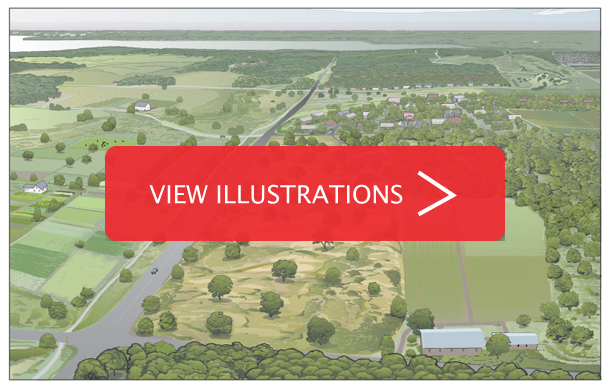

In the Water Security Act’s thirtieth year, Science Times takes a look at how 30 watersheds have changed. Staff writer Deborah Syler kicks off the series with her homeland, Wisconsin’s Yahara Watershed.
I have few childhood memories that are not saturated with water. The shores of Lake Mendota were host to my summers, even though swimming was often prohibited, on account of the algae. As a farmer’s daughter, my life kept rhythm with the water of the seasons: the spring rains, the summer dry spells, the ice and snow. We lived at the whims of an erratic cycle of abundance, scarcity, and normalcy.
Today, water maintains an unpredictable and almighty presence in southern Wisconsin. This April’s torrential rains and subsequent floods are sure to linger in people’s memories. The nearly catastrophic storms broke records, flood barriers, banks, and spirits. Parts of the drenched landscape bathed in the floodwaters for days and bore wrinkles for weeks.
The region in which my childhood home lies, the Yahara Watershed Subunit, was relatively absorbent, and lucky. Greta and Lou Donaldson, who own Donaldson Dairy, a small farm near my parents’ former farm, think the watershed’s performance was not just luck. They say it was the result of hard work and effective change. Easy for them to say—they managed to make a profit off the rain, for the output of their farm’s pastures is not just milk, but also water.
The profits this sister-and-brother operation reaps from water normally flows at a steady trickle year-round. This spring’s rains and snowmelt bumped their earnings—a well-earned payoff for the sweat the siblings have put into their land. Where excess water used to erode the family farm’s physical and financial ground, the Donaldsons have channeled this former liability into their liquid assets.
“We treat water like a crop, so we cultivate the land accordingly,” Greta told me as she checked the recharge meter, a monitoring system for how much rainwater and snowmelt seeps back into the soil. As it does all local farms, the Yahara Watershed Management Authority (YWMA) pays the Donaldsons by the gallon of nutrient-free water their fields feed back into the groundwater, the region’s drinking water reserve. Small, pasture-based and buffered by restored forests and stream banks, the farm is well protected from floods such as this April’s and well positioned to divert the floodwaters into their earnings. But profit potential was not the primary motivation for this business model—staying in business was.
Lou and Greta, 51 and 53 respectively, have been steadily “greening” the farm’s acres since their father’s death in 2039. Greta lives on the property with her partner Hanna and their teenage son. Lou lives with his family of four in nearby Waunakee. He works as a water quality specialist with the YWMA, but he helps Greta with the water farming side of the business. When they were children, the farm was a confined dairy operation, and their father’s land management practices, while well-intended, did not manage water well. During the wet springs, their land flushed out water and manure-soiled earth like a leaky toilet. When the Water Security Act passed a year after inheriting the farm, Lou and Greta faced a challenge larger than just caring for the herd: how to keep the farm.
Suddenly, the country’s expectation of Midwestern farmers was more than just food production. They also had to help supply the nation with clean freshwater. For an industry notorious for the opposite, this was no small charge, and not all farms could handle it. In fact, since the beginning of the twenty-first century, agriculture in the watershed has eroded faster than a tired cornfield in a thunderstorm. Farmland acreage is now half of what it was in 2000. Cultivating sufficient, clean water, in addition to crops, led to farmland’s disappearing act.
“From a water quality perspective, this watershed used to be way over-farmed,” Lou told me somewhat apologetically. Wearing the hat of farmer and that of the YWMA, Lou is well aware that the watershed’s agricultural decline is still a sensitive issue. Its terrain mottled by farmland and development, Yahara has long had to balance the water needs of both agriculture and urban life, along with demands that extend beyond the watershed’s boundaries.
Even with its abundance in water, no amount has been large enough to dilute Yahara’s history of pollution. Since World War II, agricultural effluent saturated the watershed’s water and soil with phosphorus and nitrogen, nutrients that become pollutants when in excess. While agriculture’s roots in the region run deep, its political clout proved to be too shallow in the Water Security Act’s wake. Yahara became one of the Mississippi watersheds charged with allocating its freshwater to the (virtually) waterless Southwest, a demand that only validated what experts had been predicting: saving water meant sacrificing farmland and some traditional ways.
My parents’ mid-sized corn-for-feed farm was among the sacrificed. Like the Donaldsons, my parents tended their land for water to comply with the new Act’s water quality and supply standards. Unlike the Donaldsons, this meant giving up food cultivation altogether. Farming water became more lucrative than cattle feed.
Typically (and hereafter) referred to as merely the Reform, historians place the Water Security Act of 2040 on par with Roosevelt’s New Deal. In response to a colossal national water crisis, the legislation transformed water management in the United States. It created our current water governance framework, Nested Watersheds, as well as strict new standards designed to meet the nation’s complicated water needs. The Reform was a fix to a system that was not working.
The fix also transformed agriculture across the country and many a farmer’s way of life—my family and the Donaldsons are but two case studies. America’s prioritization of clean freshwater ushered in a new era for Yahara’s farming tradition.
To continue reading, download the PDF.






